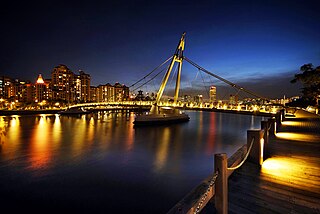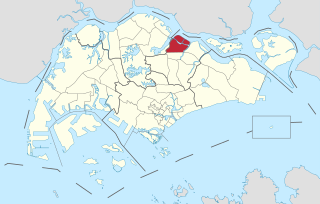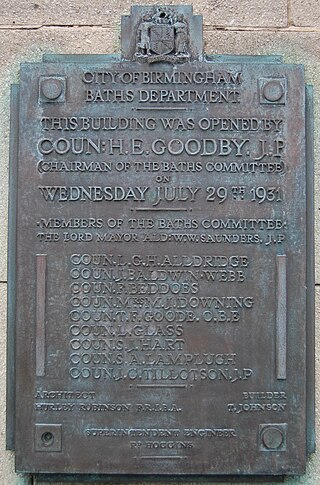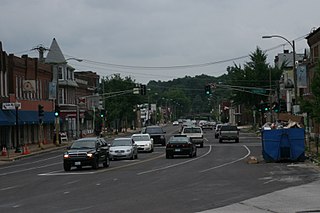
The Quabbin Reservoir is the largest inland body of water in Massachusetts, United States, and was built between 1930 and 1939. Along with the Wachusett Reservoir, it is the primary water supply for Boston, 65 miles (105 km) to the east, and 40 other cities and towns in Greater Boston. The Quabbin also supplies water to three towns west of the reservoir and acts as backup supply for three others. By 1989, it supplied water for 2.5 million people, about 40% of the state's population at the time. It has an aggregate capacity of 412 billion US gallons (1,560 GL) and an area of 38.6 square miles (99.9 km2).

Kallang is a planning area and residential zone located in the Central Region of Singapore.

Yishun, formerly known as Nee Soon, is a residential town located in the northeastern corner of the North Region of Singapore, bordering Simpang and Sembawang to the north, Mandai to the west, the Central Water Catchment to its southwest, Ang Mo Kio to its south, as well as Seletar and Sengkang to its east and southeast respectively.

Kennedy Town is an area at the western end of Sai Wan on Hong Kong Island in Hong Kong. It was named after Arthur Edward Kennedy, the 7th governor of Hong Kong from 1872 to 1877. Administratively, it is part of Central and Western District.

Plover Cove Reservoir, located within Plover Cove Country Park, in the northeastern New Territories, is the largest reservoir in Hong Kong in terms of area, and the second-largest in terms of volume. It is the world's first freshwater coastal lake constructed from an arm of the ocean. Its main dam, which disconnected Plover Cove from the sea, was one of the largest in the world at the time of its construction.

Seletar is an area located in the north-east of Singapore. Its name can also refer to the Seletar Planning Area, situated in the North-East Region of Singapore. The place name was derived from the Malay subgroup who were indigenous to the area, the Orang Seletar. It shares boundaries with the planning areas of Sengkang to the south, Punggol to the east, Yishun and Simpang to the west, as well as the Straits of Johor to the north.

Kowloon Park is a large public park in Tsim Sha Tsui, Kowloon, Hong Kong. It has an area of 13.3 hectares and is managed by the Leisure and Cultural Services Department.

Fort Canning Hill, or simply known as Fort Canning, is a prominent hill, about 48 metres (157 ft) high, in the southeast portion of Singapore, within the Central Area that forms Singapore's central business district.

The Colorado–Big Thompson Project is a federal water diversion project in Colorado designed to collect West Slope mountain water from the headwaters of the Colorado River and divert it to Colorado's Front Range and plains. In Colorado, approximately 80% of the state's precipitation falls on the West Slope, in the Rocky Mountains, while around 80% of the state's growing population lives along the eastern slope, between the cities of Fort Collins and Pueblo.

Joe Pool Lake is a fresh water impoundment (reservoir) located in the southern part of the Dallas/Fort Worth Metroplex in North Texas. The lake encompasses parts of Tarrant, Dallas and Ellis counties. The lake measures 7,740 acres (31.3 km2) with a conservation storage capacity of 176,900 acre-feet (218,200,000 m3). With a maximum depth of 75 feet (23 m) the lake drains an area of 232 square miles (601 km2).

Canyon Lake is a reservoir on the Guadalupe River in the Texas Hill Country in the United States. Canyon Lake is a U.S. Army Corps of Engineers reservoir formed on the Guadalupe River in Comal County by Canyon Dam, which is located about sixteen miles northwest of New Braunfels. The dam, lake, and all adjacent property are managed by the U.S. Army Corps Of Engineers. Water rights, waste water treatment, and hydroelectric generating facilities are managed by the Guadalupe-Blanco River Authority. Construction of the dam began in 1958 and was completed in 1964. The reservoir serves to provide flood control and water supply for the communities downstream from the dam. The lake is also a popular recreational destination.
Mount Emily Park covers 3.1 hectares in Singapore.

The Birmingham Baths Committee was an organisation responsible for the provision and maintenance of public swimming and bathing facilities. Birmingham City Council funded, constructed and ran bathing facilities throughout the city. The movement to develop baths and wash houses in Britain had its impetus with the rapid urbanisation of the Industrial Revolution, which was felt acutely in Birmingham, one of England's powerhouses.

Baden is a neighborhood of St. Louis, Missouri.

The Enoggera Dam is a heritage-listed dam, which is located within the outer, western suburb of Enoggera Reservoir, in Brisbane, Queensland, Australia.

The Tai Tam Waterworks Heritage Trail is a heritage trail in Hong Kong that comprises 22 waterworks structures with historical value near the Tai Tam group of reservoirs. The Trail is about 5 km long and takes about two hours to complete. The Trail is located along the Tai Tam Reservoir Road with entrance at Wong Nai Chung Gap near Hong Kong Parkview or at the junction of Tai Tam Road and Tai Tam Reservoir Road. Ten information stations were established en route to introduce the functions and historic values of the structures. Guided tours will be organised for schools and non-profit making organisations.

Nanaimo River is a river on Vancouver Island, British Columbia, Canada, located near the city of Nanaimo on the island's east coast. Its headwaters are in the Vancouver Island Ranges of central Vancouver Island and its mouth, the Nanaimo River estuary, is at the south end of Nanaimo Harbour in the Strait of Georgia. The estuary is part of the Pacific Estuary Conservation Program.
The Keppel Hill Reservoir is an abandoned reservoir near Mount Faber in the southern part of Singapore. It was built during the colonial period of Singapore. It fell into disuse due to its small capacity and was eventually forgotten.

Mount Emily Swimming Pool was a swimming pool at Upper Wilkie Road, Singapore. Established in 1931, the pool was named after and originally occupied by the Mount Emily Reservoir, of which the pool was converted from. Mount Emily Swimming Pool was the first public pool in Singapore.


















